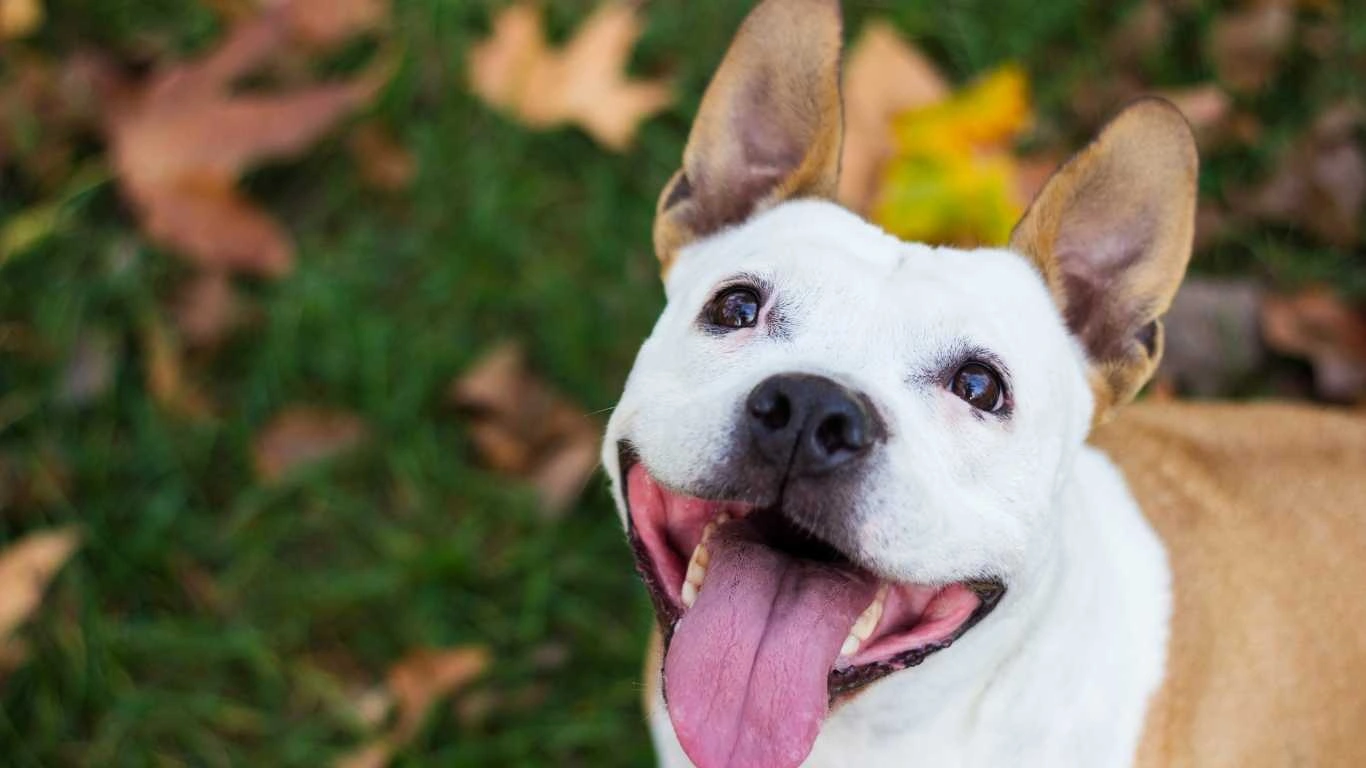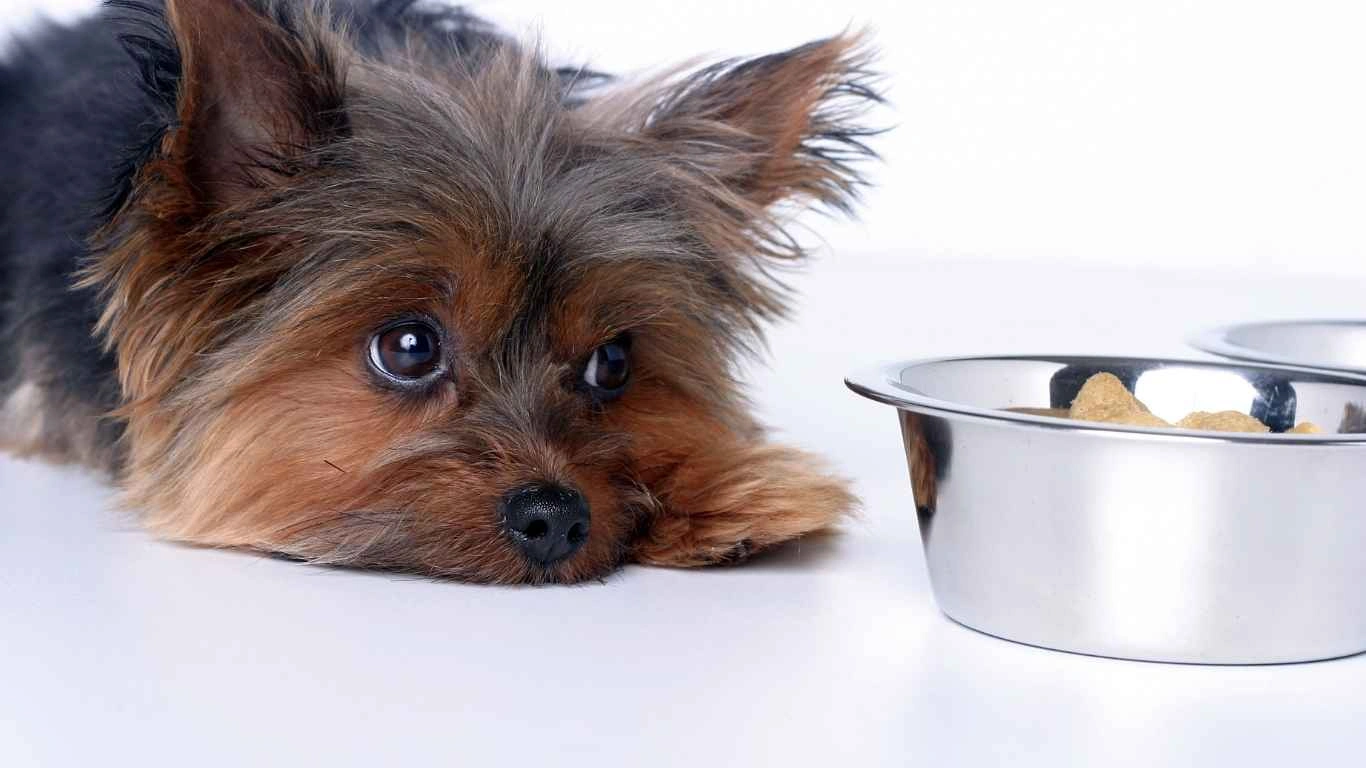Best Meal Plan for a Healthy Adult Dog: Top Tips for Healthy Nutrition
As a pet nutritionist with years of experience working alongside veterinarians, I’ve seen firsthand how crucial a well-balanced diet is to a dog’s health. It’s often said that a dog is a man’s best friend, and just like any good friend, we want to make sure our furry companions are healthy, happy, and living their best lives. One of the most important ways to ensure this is through a proper meal plan. If you’re wondering what the best meal plan for a healthy adult dog looks like, you’ve come to the right place. In this post, I’ll walk you through everything you need to know to give your dog the nourishment they deserve, based on my hands-on experience with both pet nutrition and veterinary care.
The Essentials of a Healthy Dog Diet

First things first: let’s talk about what a healthy dog diet *really* consists of. As a pet nutritionist, I can’t stress enough how important it is to ensure your dog is eating the right mix of nutrients, especially if you want them to thrive in the long run. A balanced diet for a healthy adult dog typically includes high-quality protein, fats, carbohydrates, vitamins, and minerals. But it’s not just about putting any food in front of them—it’s about making sure each ingredient serves a purpose.
Protein: The Building Block of a Healthy Dog
When it comes to your dog’s diet, protein is *non-negotiable*. Protein is crucial for building and repairing tissues, supporting immune function, and helping maintain muscle mass. The best sources of protein for dogs include chicken, beef, turkey, and fish, but it’s important to choose high-quality sources. Processed meats or fillers won’t provide the same level of benefits.
In my experience, a high-protein diet is especially important for active dogs, or those that are in their prime, as they need more muscle-building nutrients. But even if your dog isn’t particularly active, protein still plays a critical role in maintaining overall health.
Fats: Essential for Energy and Coat Health
We all know that fats are a necessary part of our own diets, but they’re just as important for dogs! Fats are the most concentrated source of energy and help your dog absorb fat-soluble vitamins (like vitamins A, D, E, and K). On top of that, fats play a major role in maintaining healthy skin and a shiny coat.
Some of the best sources of healthy fats for dogs include fish oils, chicken fat, and flaxseed. Omega-3 and omega-6 fatty acids, found in fish oils, are particularly beneficial for skin health and can even help reduce inflammation in dogs with allergies or joint issues. Personally, I’ve seen remarkable improvements in coat texture and overall skin health when owners include a proper balance of healthy fats in their dogs’ meals.
Carbohydrates: Fuel for Your Dog’s Active Life

Carbohydrates are often a hot topic of debate when it comes to dog food. Some people believe carbs aren’t necessary for dogs, but in reality, they provide a great source of energy and fiber. Carbs help fuel your dog’s muscles, organs, and brain, and they also contribute to digestive health by promoting regular bowel movements.
When choosing carbs for your dog, opt for whole grains like brown rice, oats, or sweet potatoes. These provide essential nutrients and fiber without the sugar spikes that processed carbs might cause. I’ve seen some amazing results in terms of energy levels and digestive health when dogs are given complex carbohydrates rather than simple ones.
Vitamins and Minerals: Supporting Overall Health
Just like in humans, vitamins and minerals are essential for dogs too. These micronutrients help support everything from bone health to immune function and even vision. A balanced diet should include a range of vitamins and minerals, including calcium, phosphorus, magnesium, and various B vitamins.
While most commercial dog foods contain a variety of vitamins and minerals, if you’re preparing homemade meals for your dog, it’s essential to do your research or consult a pet nutritionist. I’ve helped many pet owners develop customized meal plans that provide the right balance of micronutrients, ensuring that their dogs stay as healthy as possible.
How Much to Feed Your Dog: Finding the Right Portion Size

Now that you know what goes into a healthy dog diet, let’s talk about how much you should be feeding your dog. Overfeeding can lead to obesity, while underfeeding can result in malnutrition and a lack of energy. The right amount varies based on your dog’s size, breed, age, and activity level.
As a general guideline, most adult dogs need about 2-3% of their body weight in food each day, spread across two meals. So, if your dog weighs 30 pounds, they would need around 0.6 to 0.9 pounds of food per day. But this is just a starting point—be sure to monitor your dog’s weight and adjust the portion size as needed. Every dog is unique, and their nutritional needs can change over time. For example, a dog that’s more active will need more food to maintain its energy levels, while a less active dog may need fewer calories to prevent weight gain.
And trust me, I know that it’s easy to spoil our pups with treats and extra servings, but sticking to a proper portion size will keep them at a healthy weight, which is so important for their long-term health. I’ve seen a lot of dogs struggle with joint problems, diabetes, and other health issues when they were overfed, so it’s worth paying attention to how much you’re feeding them.
Choosing the Right Dog Food: Dry, Wet, or Raw?

So, you’ve got a better idea of what your dog’s meal plan should look like. But what about the type of food you should choose? With so many options available—dry kibble, wet food, and even raw diets—it can be a bit overwhelming. As a pet nutritionist, I’ve spent a lot of time helping pet owners navigate this decision, and while there’s no one-size-fits-all answer, I’ll break down the pros and cons of each type of food to help you find the best meal plan for your dog.
Dry Dog Food (Kibble)
Dry dog food, or kibble, is the most common and affordable option for dog owners. It’s convenient, easy to store, and typically has a longer shelf life than wet food. But is it the best choice for your dog? Let’s take a closer look.
From a practical standpoint, kibble is great because it helps keep your dog’s teeth clean. The crunchy texture of kibble can reduce tartar buildup, which is beneficial for dental health. In my experience, dogs who eat kibble tend to have fewer dental issues, which is a huge plus.
However, not all kibble is created equal. The quality of the ingredients can vary greatly, so it’s important to choose a high-quality brand that uses real meat and avoids fillers like corn or soy. I’ve seen many dogs thrive on premium kibble brands that contain high-quality protein, healthy fats, and whole grains, but I’ve also seen issues arise from low-quality kibble filled with by-products and artificial additives.
One thing to keep in mind with kibble is that it’s often more processed than wet or raw food, which can mean fewer nutrients. If you’re feeding your dog kibble, make sure it’s fortified with the vitamins and minerals they need to stay healthy. But overall, kibble is a solid option for many dogs, especially if you’re looking for convenience and affordability.
Wet Dog Food
Wet dog food, which comes in cans or pouches, is another popular choice for dog owners. It’s often more palatable for picky eaters because it’s moist and flavorful. Wet food can also be a great option for dogs who have dental issues or trouble chewing dry kibble.
One of the biggest advantages of wet food is that it tends to have a higher moisture content, which is beneficial for dogs who don’t drink enough water throughout the day. Hydration is crucial for kidney and urinary tract health, and wet food can help keep your dog properly hydrated, especially if they’re not always thirsty.
However, wet food can be more expensive than kibble, and it generally has a shorter shelf life once opened. It’s also less convenient to store, as it requires refrigeration. If you choose wet food for your dog, be sure to check the ingredient list and avoid foods with unnecessary fillers or artificial preservatives.
Raw Diet: The Controversial Option

The raw food diet, also known as a “BARF” (biologically appropriate raw food) diet, is becoming increasingly popular among pet owners. This diet consists mainly of raw meat, bones, fruits, and vegetables, with the idea that it mimics what wild dogs would eat in nature.
While some dog owners swear by the benefits of a raw diet—such as shinier coats, cleaner teeth, and better digestion—there are also some risks involved. For one, feeding your dog raw meat can expose them to harmful bacteria like Salmonella and E. coli, which can be dangerous to both your dog and your family.
Another concern with a raw food diet is ensuring that it’s nutritionally balanced. A raw diet can be hard to get right, and if you’re not careful, you could end up causing nutrient deficiencies in your dog’s diet. That said, I’ve seen dogs on raw food thrive when the diet is carefully planned and monitored by a professional. If you’re considering raw feeding, I highly recommend consulting with a pet nutritionist or your vet to make sure your dog is getting all the essential nutrients they need.
Which Type of Food is Right for Your Dog?
Ultimately, the best meal plan for your healthy adult dog will depend on several factors, including their health, breed, and your lifestyle. There’s no universal “best” choice, but by understanding the pros and cons of each type of food, you’ll be able to make an informed decision.
When choosing between dry food, wet food, or a raw diet, consider your dog’s individual needs. For example, if your dog has dental issues or is a picky eater, wet food might be the best option. If you’re looking for convenience and affordability, high-quality kibble could be a great fit. If you’re up for the challenge of preparing a raw diet and have the resources to ensure proper nutrition, raw feeding may be an option worth exploring.
Supplementing Your Dog’s Diet: The Role of Treats and Extras

Once you’ve settled on a base food for your dog, it’s time to think about extras. While a balanced meal plan is crucial for your dog’s overall health, treats and supplements can play an important role in their diet as well.
Healthy Dog Treats: The Good, the Bad, and the Ugly
Dog treats are a great way to reward your pup, but not all treats are created equal. I always advise my clients to choose healthy, natural treats that don’t contain artificial colors, flavors, or preservatives. Look for treats that are made with high-quality ingredients like real meat, vegetables, or fruits.
It’s also important to remember that treats should be given in moderation. Overfeeding treats can contribute to obesity, especially if they’re high in calories. I’ve worked with pet owners whose dogs were overweight, and often, the culprit was excessive treats. So, while it’s great to give your dog a treat here and there, make sure it doesn’t make up a large portion of their daily calorie intake.
Supplements for Dogs: Are They Necessary?
Supplements can be beneficial in certain situations, but they’re not always necessary. In most cases, a well-balanced, high-quality diet will provide all the nutrients your dog needs. However, if your dog has specific health concerns, supplements like joint support or omega-3 fatty acids may be recommended by your vet.
For example, I’ve seen great results with omega-3 supplements for dogs with skin allergies or joint issues. These healthy fats can help reduce inflammation and promote a shiny, healthy coat. But, as with anything, it’s essential to consult with your vet before adding supplements to your dog’s diet to ensure they’re safe and effective.
Homemade Dog Food: Is It the Right Choice for Your Pup?

As we dive deeper into the best meal plan for a healthy adult dog, one option many pet owners consider is homemade dog food. I’ve worked with plenty of clients who are keen on cooking meals for their pups, and I understand the appeal—it’s comforting to know exactly what’s going into your dog’s food. But, is it the best choice? Let’s explore this option together and see if it’s the right fit for your dog’s needs.
Homemade dog food can be fantastic if you’re willing to put in the time and effort. It allows you to choose high-quality ingredients and avoid the preservatives and fillers that are sometimes found in commercial dog food. For example, you can cook up lean meats, vegetables, and grains that provide your dog with the nutrients they need to stay healthy.
However, there are some challenges that come with preparing homemade meals for your dog. For one, it’s crucial to ensure the meals are nutritionally balanced. Unlike commercial dog food, which is formulated to meet your dog’s nutritional requirements, homemade food can be easy to get wrong. If you’re not careful, you might end up missing out on key nutrients like calcium or omega-3 fatty acids. I’ve seen dogs with deficiencies caused by homemade diets that weren’t properly balanced, so it’s always a good idea to work with a vet or pet nutritionist to create a custom meal plan.
How to Get Started with Homemade Dog Food
If you decide to give homemade dog food a try, here are a few tips to help you get started:
- Consult a professional: Before you start cooking for your dog, it’s always a good idea to consult with a vet or a pet nutritionist. They can help guide you in creating a balanced meal plan that meets your dog’s needs.
- Cook with variety: Incorporate different types of proteins, vegetables, and grains to provide a variety of nutrients. Think chicken, beef, carrots, spinach, sweet potatoes, and quinoa. This variety helps ensure your dog gets a broad spectrum of vitamins and minerals.
- Consider supplements: Some dogs may need additional supplements to meet their nutritional needs. Omega-3 fatty acids, glucosamine for joint health, and multivitamins are common additions to homemade meals.
- Portion control: Just like with any diet, portion control is important to prevent overfeeding. Too much food can lead to obesity, while too little can cause malnutrition.
It’s a big commitment, but if you’re up for the challenge, homemade dog food can be a great option that allows you to cater to your dog’s specific needs.
Food Allergies and Sensitivities: How to Handle Them

Another important consideration when planning your dog’s meals is food allergies or sensitivities. Some dogs are more sensitive to certain ingredients, such as grains, dairy, or certain proteins. Over the years, I’ve worked with many pet owners whose dogs struggled with digestive issues, itchy skin, or chronic ear infections due to food allergies. It’s not always obvious which ingredients are causing the problem, so it can take some trial and error to identify the culprit.
Signs of Food Allergies in Dogs
If you suspect your dog might have a food allergy, keep an eye out for these common symptoms:
- Itchy skin: One of the most common signs of food allergies is excessive itching or hot spots.
- Gastrointestinal issues: Vomiting, diarrhea, or frequent stomach upset can be caused by a food sensitivity.
- Ear infections: Chronic ear infections can sometimes be linked to food allergies.
- Behavior changes: Some dogs with food allergies may become more irritable or lethargic.
If your dog exhibits any of these signs, it’s worth consulting with your vet. They might recommend an elimination diet, where you feed your dog a limited ingredient food for a few weeks to see if their symptoms improve. From there, you can gradually introduce different ingredients to pinpoint the allergy.
How to Manage Food Allergies in Your Dog’s Meal Plan
Once you’ve identified a food allergy, the next step is adjusting your dog’s diet. Here are some ways to manage food sensitivities:
- Switch to a limited-ingredient diet: These foods contain fewer ingredients, making it easier to identify and avoid the trigger food.
- Try hypoallergenic dog food: Some brands offer dog food that’s designed to be gentle on the stomach and reduce allergic reactions.
- Homemade food: As mentioned earlier, preparing homemade meals for your dog can give you full control over what goes into their food, allowing you to avoid allergens altogether.
Food allergies can be a challenge, but with the right approach, it’s entirely possible to create a healthy and balanced meal plan that meets your dog’s unique needs.
Maintaining a Healthy Weight: The Key to Longevity
One of the most important aspects of any meal plan is maintaining a healthy weight for your dog. Obesity is a growing problem in pets, and it can lead to a variety of health issues, including joint problems, heart disease, and even a shorter lifespan. As a pet nutritionist, I’ve worked with many clients to help their dogs lose weight safely, and I can tell you that it’s absolutely worth the effort.
How to Keep Your Dog at a Healthy Weight
Here are a few tips to help you maintain your dog’s ideal weight:
- Measure their food: Always measure your dog’s food according to the guidelines on the food packaging or as recommended by your vet. This helps prevent overfeeding.
- Limit treats: As tempting as it is to spoil your pup with treats, be mindful of how many you’re giving them. Treats should only make up about 10% of your dog’s daily caloric intake.
- Increase exercise: Regular exercise is crucial for weight management. Whether it’s a daily walk or a game of fetch, physical activity helps keep your dog in good shape.
- Regular vet checkups: Routine vet visits allow you to monitor your dog’s weight and overall health, so you can make adjustments to their diet or exercise plan as needed.
By following these simple guidelines, you can help your dog maintain a healthy weight and enjoy a long, active life.
References
Disclaimer: The information in this article is based on my professional experience as a pet nutritionist and is intended for informational purposes only. Always consult with your veterinarian or a certified pet nutritionist before making changes to your dog’s diet or health plan.





